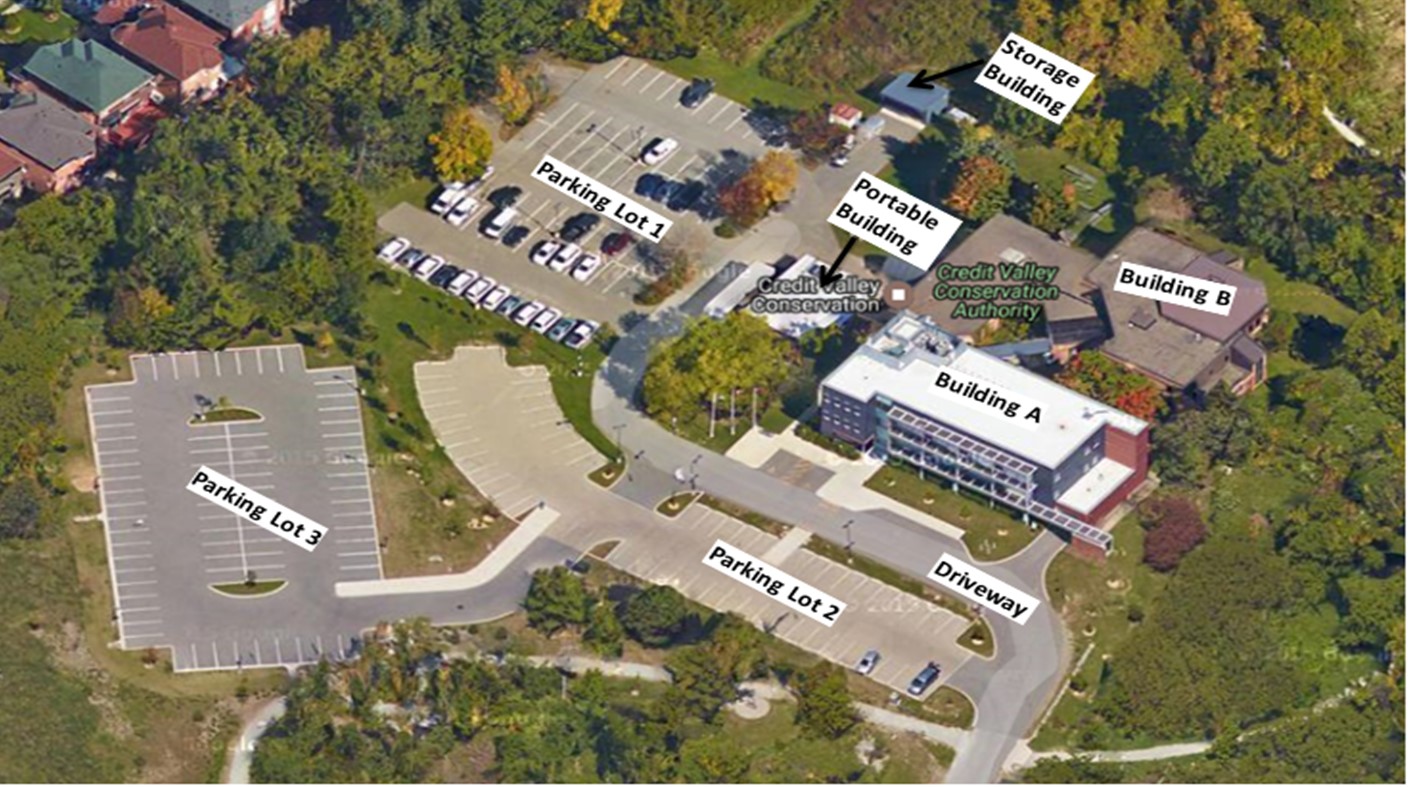Investigating the Technical and Financial Feasibility of a Smart Blue Roof
Credit Valley Conservation’s (CVC) main office has a large, flat roof, making it an ideal place for STEP to investigate the feasibility of smart blue roof systems for stormwater management. While a large body of research has demonstrated the significant water management benefits of green roofs, this study will consider the potential of blue roof technology as a viable and cost-effective alternative. Blue roofs detain stormwater, releasing it slowly after rainfall events, allowing it to pond and evaporate, or in some cases storing it for non-potable reuse.
Initiated in early 2018 with the support of the Region of Peel and the Federation of Canadian Municipalities (FCM), this study investigated the possibility of retrofitting CVC’s existing ‘Building A’ roof with a smart blue roof, with real-time controls. The intent of the system is to detain stormwater on the roof over an extended period of time, thereby reducing peak flows, promoting evaporation, and ultimately helping to build capacity and resiliency in Mississauga’s municipal stormwater system.
The project investigated the feasibility of designing and constructing a blue roof integrated with “Internet of Things” technology – a system of sensors and real-time controls – for managing the flow of water from the roof to CVC’s existing rainwater harvesting tank for indoor and outdoor non-potable use. The system’s conceptual design is intended to maximize the potential benefits of blue roofs, including water and energy savings associated with rainwater reuse, reduced peak flows to storm sewer systems, and potential mitigation of the urban heat island effect.
The feasibility study revealed the following when using CVC’s Building A as a template to pilot a smart blue roof system:
- The building has a parapet height of 400mm. Structurally, the rooftop can hold up to 180 mm of precipitation (equivalent to 21m3 across the roof area) thus capturing the 100-year storm.
- The smart blue roof system can meet non-potable water demands of 8.84 m3/day, exceeding our building’s current non-potable water demand of 5.68 m3/day.
- By storing water on the roof, a typical air conditioning unit will see a reduction of 11.6 GJ/year translating into an annual electricity savings of 3,210 kWh, or about $302 and a GHG reduction of about 0.2 tonnes CO2e annually.
- The estimated cost to implement a smart blue roof on CVC’s Building A roof is $365/m2
Industrial, commercial and institutional (IC&I) lands make up about 20-30% of the total urban area, and most of the buildings have large, flat roofs which generate large amounts of runoff. These typical building characteristics present an opportunity for improving stormwater management in the IC&I sector. One of the key aims of this study was to build a template for implementing blue roofs on IC&I buildings across the GTA and beyond.
In July 2020, CVC received over $280,000 in funding through an Intact Adaptation Action Grant from Intact Financial Corporation. This funding will go towards the detailed design and implementation of a Smart Blue Roof at CVC’s head office in Mississauga. The funding will also help CVC assess the real-world performance of the system and understand how to scale this technology in our local communities and across the GTA. For more details please see the Smart Blue Roof Detailed Design and Implementation page.
For more information regarding blue roof projects at CVC, contact:
James Cowan
Coordinator, Integrated Water Management
james.cowan@cvc.ca
Bernadeta Surowiec
Specialist, Integrated Water Management
Bernadeta.surowiec@cvc.ca

